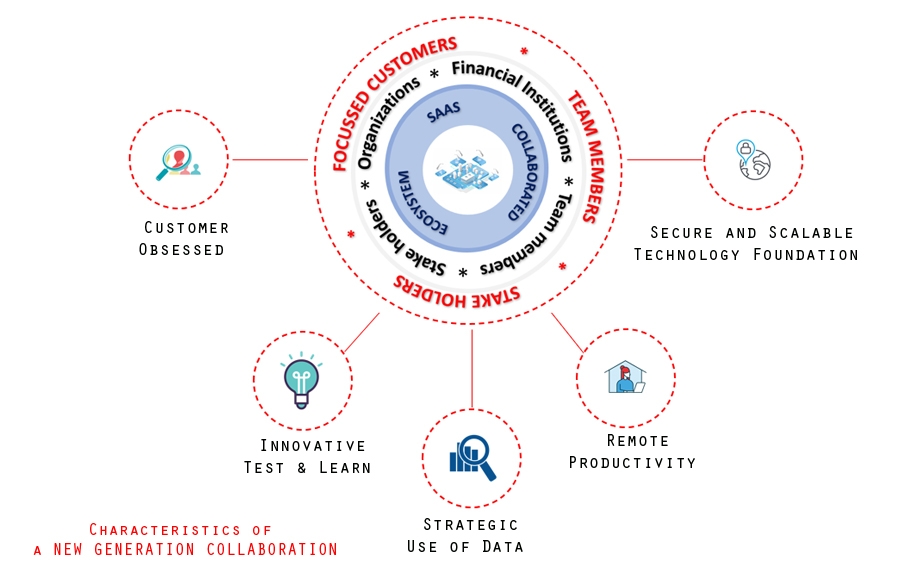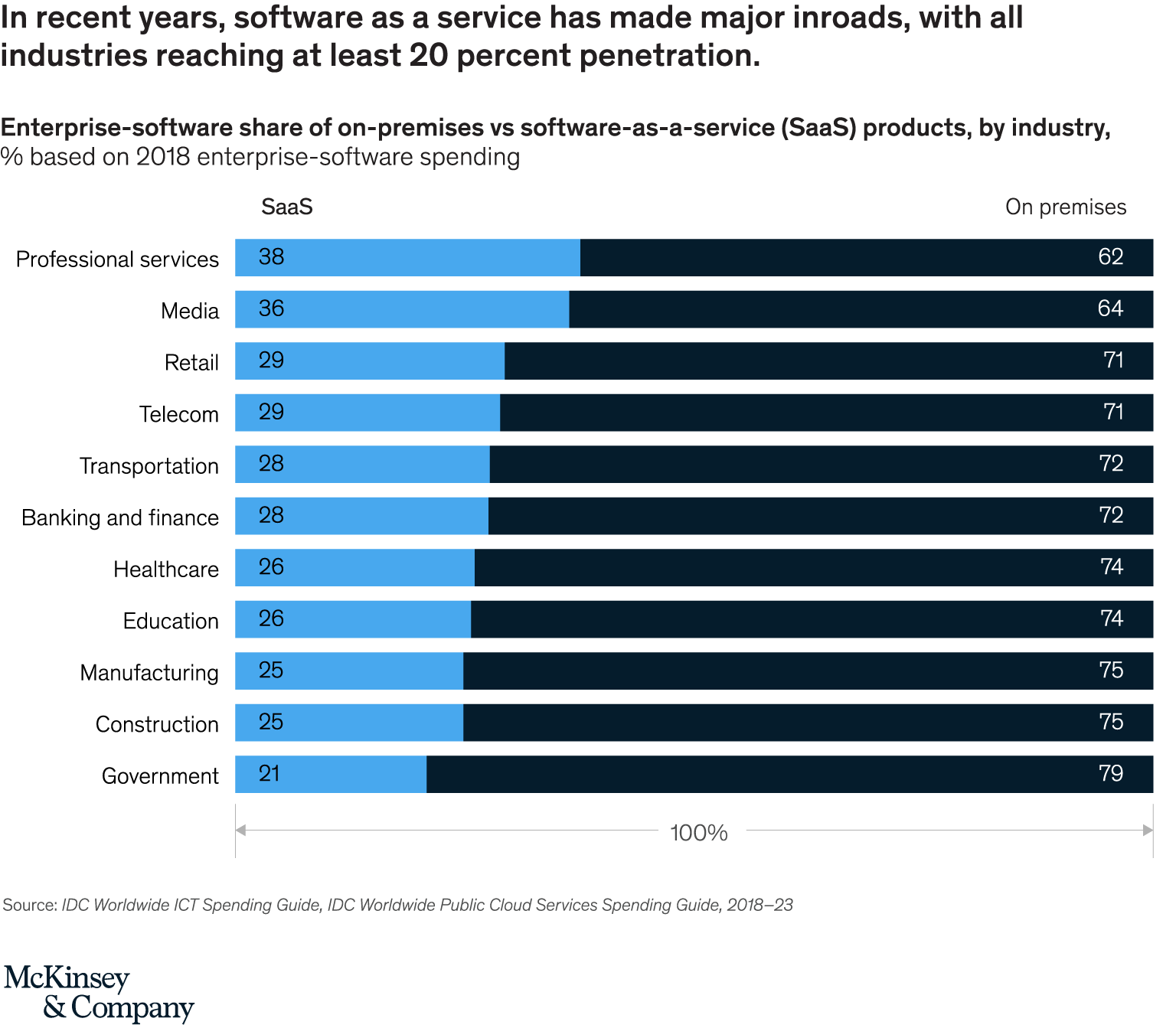How does the Next-Generation Collaboration look like
Introduction of Collaboration in the workplace
Collaboration happens when two or more people or groups work together through sharing ideas and thoughts to accomplish a common goal. It has always proven a higher-level accomplishment when like-minded people work together as a team. A collaborative approach has been put into practice by using a w...
Introduction of Collaboration in the workplace
Collaboration happens when two or more people or groups work together through sharing ideas and thoughts to accomplish a common goal. It has always proven a higher-level accomplishment when like-minded people work together as a team. A collaborative approach has been put into practice by using a web-based program, email, and videoconferencing outside the office boardroom. A technology platform has been able to contribute and be able to bring a team together to offer different perspectives and expertise to solve problems through a collective effort.
With the Smartphone’s arrival, you find that the Mon-to-Fri, 9 to 5 routine does not exist anymore. An era of hypermobility has set in, and an evolution in the workforce is taking place. We seem to be moving away from the conventional model of a hierarchical and centralized office with the sophistication of communication technology. Work perception is now an approach that is driven by the outcome. This development is beneficial not only to the employees but also to the companies. Virtual teams and project management, which are now cloud-based, have become the new norm. Nowadays, almost 16% of companies are hiring only remote teams globally.
Is Working Remotely Effective for Employees and Companies
Yes, remote work is on the rise. The number of hours spent working off-site is increasing, as is the number of workers. This flexible new work model can solve the problem of work/life balance. Employees can tackle different challenges related to working on the go. They have virtual access to their projects, and their teams work with maximum productivity and less work pressure.
For those growing small companies, this remote workforce tends to deliver different advantages such as the freedom to source the required talent cost-effectively and from anywhere. Maintaining a physical location for any company is an expensive affair. With employees being virtual, the company has a better chance of growing seamlessly at lower costs. Highly engaged workplaces can claim 41% lower absenteeism, 40% fewer quality defects, and 21% higher profitability.
clients.
To manage this lifecycle, professional organizations adopt various innovative, complicated, and expensive tools and means. Using these solutions, the relationship, as mentioned earlier of all the stakeholders, conduct their businesses within the provided sets of frameworks.
Therefore, the solution should be a communication-centric digital infrastructure platform. Its efficacy depends on bridging the external with the internal for building a trust-based ecosystem where all stakeholders work to create value through enhanced collaboration, branding, and community-focused eCommerce.
#digitalinfrastructure #next-Generation #collaboration #trust-based #ecosystem #idhubs
Read more
For example, a company with 1000 people where employees work remotely three days a week, if employees at a company with an average engagement rate improve productivity by 5% by working remotely, the company will save approximately $3,000 per employee. That would amount to $ 8 million of annual savings.
How does the Next-Generation Collaboration look like The next-generation collaboration platform will be the end-to-end ecosystem management ability. It seamlessly provides the engagement and benefits of each participant in the whole ecosystem networks through the decentralized and self-sovereign identity by identifying the use case security rules and compliances. In a real lament term, a successful organization is the outcome of a seamlessly integrated and successfully established trusted relationship management of its executive management, team members from various departments and clusters, stakeholders, partners, and the target customer/
3+ mins read
loading.....
The next software disruption: How vendors must adapt to a new era
Over the turbulent past decade, many legacy software players proved to be remarkably resilient. Now they must adopt a new strategic playbook to weather the different challenges ahead.
For the past ten years, the rise of software as a service (SaaS) has reshaped the enterprise-software industry. During that period, the disruptors that pioneered the...
Over the turbulent past decade, many legacy software players proved to be remarkably resilient. Now they must adopt a new strategic playbook to weather the different challenges ahead.
For the past ten years, the rise of software as a service (SaaS) has reshaped the enterprise-software industry. During that period, the disruptors that pioneered the model and the incumbents that transitioned to it created tremendous shareholder value. Between 2011 and 2018, the global software industry’s market cap grew at twice the rate of the overall market. Yet that growth came with a cost: industry profitability tumbled, falling by half over the decade.
The next ten years will not be any less tumultuous. As SaaS matures, the customer’s expectations around ease of use and ease of doing business will continue to rise. Platforms as a service (PaaS) from the Big Three cloud vendors (Amazon Web Services, Google Cloud, and Microsoft Azure) are gaining share and commoditizing software. And with financial markets reeling from the COVID-19 pandemic, investors are looking more closely at bottom-line health.
Addressing these demands will require software vendors to adopt a new playbook. Success will take a renewed strategic focus, a willingness to expand “as-a-service” offerings beyond subscription pricing, and a greater emphasis on profitable growth (see the sidebar, “Software’s new playbook”).
Customers want SaaS products and an SaaS experience
SaaS has become the default software-delivery model—and at breakneck speed (Exhibit 1). In 2010, SaaS offerings commanded just 6 percent of enterprise-software revenues. By 2018, that share had grown to 29 percent, or $150 billion globally. Yet that figure understates the true size of the market. When revenues from companies still transitioning to SaaS are counted, the total as-a-service share rises to 75 percent of all enterprise-software revenues, or more than $380 billion. Those numbers mean that companies with no SaaS offerings now represent only one-quarter of total industry revenues.
In a sign of the market’s maturity, late adopters have come on board. More than one-fifth of all government software spending now goes to SaaS. Even categories such as CAD, whose highly expert customer base would normally resist sweeping product changes, are making the transition.
Vendors that have not yet begun their SaaS transformation must do so now. The “next normal” established during the COVID-19 pandemic will accelerate the footprint of SaaS, given the growth of remote working, the rapid deployment of digital solutions, and the lower up-front costs.
To succeed with SaaS, however, vendors must do more than offer a subscription-pricing model on a product hosted in the cloud. They need to match the streamlined, customer-friendly as-a-service product-delivery experience with a similarly streamlined and customer-friendly end-to-end journey. Right now, the customer experience of many SaaS vendors often feels disjointed. All too frequently, for instance, legacy billing processes and order forms riddled with confusing product terminology make it hard for customers to know what they’re paying for. Leading players address these inconsistencies by evaluating the whole business in the as-a-service context and redesigning core processes to make them more intuitive and responsive.
Source - mckinsey #nextgenerationSAAS #collaboration #systeminfrastructure
Read more
2+ mins read
loading.....
Search Menu












